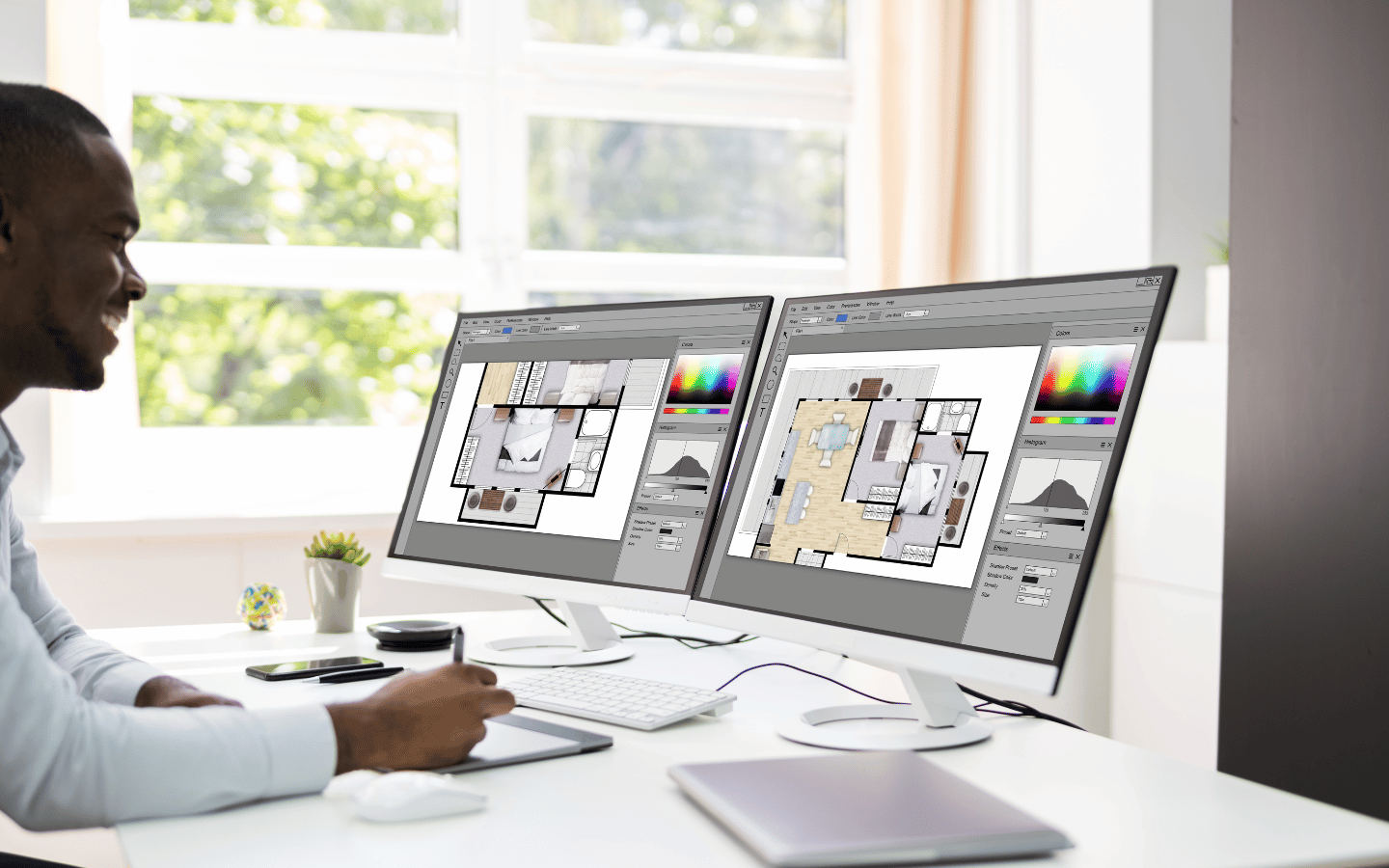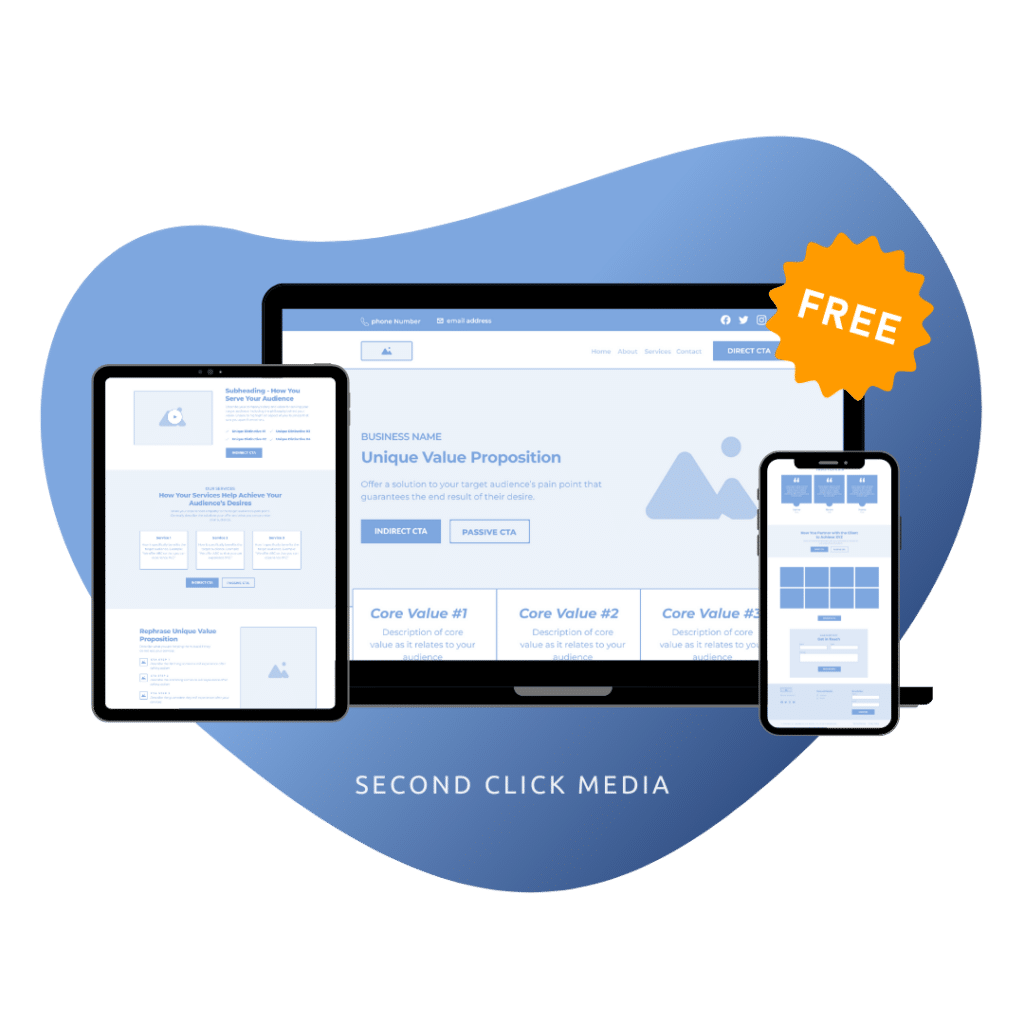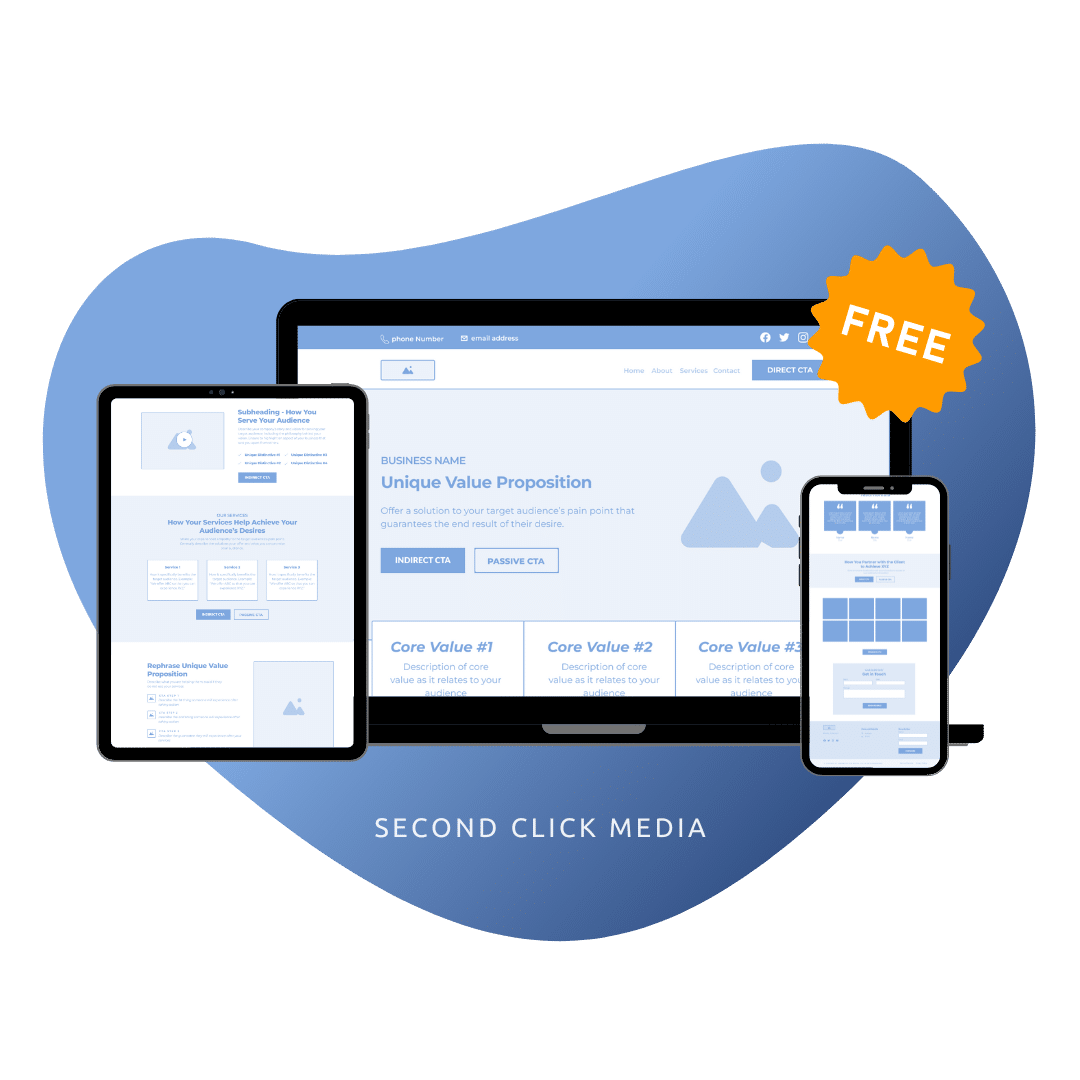A well-designed website is a key to the success of any business in the digital age. Often, your website is where potential customers will have their first of your business. Therefore, take advantage of this opportunity and represent your business well. An effective website can help you connect more with your audience and ensure that the first impression leads to more clicks, scrolling, and action steps.
In this article, we will discuss the factors to consider when designing a high-converting website and how conversion-based design ought to be the focus of any website build.
Conversion-based Design
Over the last decade, it has become increasingly easy to build a beautiful-looking website (and oftentimes without even having to code!). There are many website templates you can purchase and all you have to do is edit the content with your unique information. Viola, a website can be up in a day.
The big drawback to this convenience is utilizing a customized conversion-based design.
HubSpot is one of the largest digital marketing platforms in the market today, and they defined conversion-based design this way: “a discipline targeted specifically at designing experiences that achieve a single business goal. It seeks to guide the visitor toward completing that one specific action, using persuasive design and psychological triggers as devices to increase conversions.”
While website design is the creation of the visuals, layout, and all the navigational and functional aspects of your site, conversion-based design is the process of considering your audience and building out the website to align with your business goals and the needs of your customers. It’s an essential step to launching a website with the goal of increasing website traffic and conversion rates.
Increase Conversion Rates
Website conversions occur when taking steps towards action, such as making a purchase or signing up for a newsletter. Essentially, the conversion is what you are designing the website to facilitate – it’s the steps that you want the user to take.
If our website is not converting enough visitors into customers, it is something worth looking into and considering the various ways to improve. Fortunately, this article will help you determine if your website is reaching its potential, and how to make it more successful. If you do feel that your website needs some help to boost its conversions, you can always reach out to Second Click expert for more guidance.
Is Your Website is Converting?
- Through Your Engagements
Conversions occur when someone viewing your site engages with it. This can mean a lot of different things, depending on what your website’s call to actions are.
For instance, if you run an online store, you might define a conversion as when someone makes a purchase. However, there are other forms of engagement that can count as well. These include signing up for a newsletter, completing a form, scheduling an appointment, or even making a call!
- Distinguishing Visits From Engagements
It’s important to know how a visit to your site differs from an engagement. Visits are simply when a viewer browses your webpage. They do not have to provide any information or take any further action, instead, they are just clicking and looking around. Visits are good, and you want to have high web traffic! However, the main reason that they are important is because they help drive conversions. The more people visiting the site, the more chances you have to get a purchase, booking, signup, etc.
- By Using Industry Standards
There are some industry-standard techniques for web development that are as close to a sure thing as possible when it comes to driving conversions. It’s great to have gorgeous visuals in your web design, but if you are not guiding your visitors with a call to action, then you are likely not converting.
You also want to avoid getting too creative with your website design. Of course, you want it to stand out and be distinctive as your brand, but certain layout components your visitors expect to always be there. For example, the navigation bar is traditionally at the top of the homepage, and if the location is not easy to find or navigate, the website will not be considered user-friendly. It’s also a good idea to keep the cart or checkout button on the top right while including links to policies and FAQ at the very bottom of every page.
Simple things like this are part of the vast majority of website designs. They are consistent for a reason. People should not have to search long for information or click through multiple pages just to buy a product. If you make it challenging to navigate, visitors will likely move on to another site. So when you are designing a website, it is your job to help guide visitors to an easy, simple progression towards the steps you want them to take.
Key Components of Website Conversions
- Speed
Long load times are the quickest way to lose visitors. A good rule of thumb is to keep your site’s load times at 2 seconds or less. Any longer, visitors will most likely exit out and move on to another site, which is when we use the term “bounce rate”. If you want to encourage conversions and decrease your bounce rate, then it is important to optimize your website for speed.
Luckily, there are a lot of ways to make sure your web pages load quickly. Just a few of these include:
- Using a minimalist design can help decrease load times by cutting unnecessary buttons, images, and content. The less there is to load, the faster the page can appear. This also can improve user experience because it makes your design look less cluttered, which can be also be confusing. Plus, by trimming the fat, you can highlight the ways visitors might engage with your site and keep the emphasis on conversions.
- Editing your images for the correct pixel size and format dramatically increase load times. Ensuring that you use .jpg files instead of .png can help too!
- Optimizing for mobile means images, layouts, wording and graphics shifts appropriately for varying screen sizes. Since a lot of shopping and web browsing is done on personal devices, you really want to make sure your website offers a good mobile user experience.
- Communicating the Value
The value you offer your customers ought to be the words immediately greeting them when they visit your website. you offer a specific type of product or service, or just really good information, the way in which your website can benefit your visitors should be clear and easy to understand.
This is also a great opportunity to showcase your brand and individuality. There are probably other websites that have similar options to yours, but what makes your site special? If you offer above and beyond customer service, a dedication to the environment, or just a superior quality of products, make sure that information is bold and clear from the homepage.
Website visitors are concerned about themselves. Trust me, we are all like this. They are looking for “what is in it for me?” and your website should communicate this by spotlighting the features of your product or service through the benefits they offer. Therefore, if you have an angle, you should lead with it. The more you showcase what makes your brand unique, the more likely you are to hook visitors and drive conversions.
- User Experience
Providing a good user experience should always be at the forefront of your web design goals. We have already highlighted how important speed is, but there are other important factors that can be just as damaging to the user experience.
For instance, if you have an eCommerce store, a lengthy checkout routine is a quick way to decrease conversions. People likely do not want to go through multiple screens or have to reenter the same information over and over again to make a purchase. Streamlining this process is key to actually encourage visitors to make a purchase. Keep in mind that any inconvenience caused by your site is an opportunity for them to take their business elsewhere.
- Knowing Your Audience
Please, it is important to understand who you are targeting. Define your target audience by age, demographic, interests, and pain points. Understanding these aspects will help focus your design and messaging to appeal directly to them. Avoid casting the net too wide, and it will be a struggle trying to appeal to everyone.
If you run a kid’s clothing line, the brand imagery would include bright colors, smiling faces, and images related to fun and whimsical. Likewise, if you’re looking to offer serious financial information, the website should appear clean and professional.
If you’re having trouble with this, you can always look at competitors’ web pages and see what they are doing right. It is good to set yourself apart but there is no harm in getting inspiration.
- Accessibility
Ensure your website is accessible to varying demographics and provides an inclusive experience to those with disabilities.
A step that is often overlooked is including descriptions for any images in order for visually-impaired users who use screen readers and understand what the site is displaying. Likewise, you should enable closed captions on videos for those that are hard of hearing. These efforts will go a long way to making sure everyone is able to effectively navigate your site.
Conversion-based Design is Good Customer Service
Have you ever entered a restaurant and did not know where to go? There is not a hostess at the welcome station or a sign that states “Seat Yourself.” No one welcomes you in, gives you a menu, or shows you where to order food.
How are you supposed to eat? Is this even a restaurant? What kind of experience would that be? A bad one!
Consider the same experience for a website visitor. What is greeting them? Where do they need to go? What should they do next and where do they go for help?
Below are a few key elements to your website playing a primary role in customer service:
- The primary call to action your business desires every visitor to make should be front and center while easy to find and repeated often throughout the pages.
- The mission of your business as it relates to your customers should be personable and engaging, while easy to skim in a just a few seconds.
- Services, products, or offerings are easy to spot and navigate while speaking directly to the desires of your ideal customer.
- Contact information or ways to connect more, such as social media or a contact form need to be prominent and include invitational language to the visitor.
In this article, we discussed the factors considered when designing a high-converting website and how conversion-based design ought to be a focus for any website build.
If you are looking to get a clear understanding of where your website is at and how you can make improvements, consider booking a call and learning the next steps you can take to make your website work more for you.





